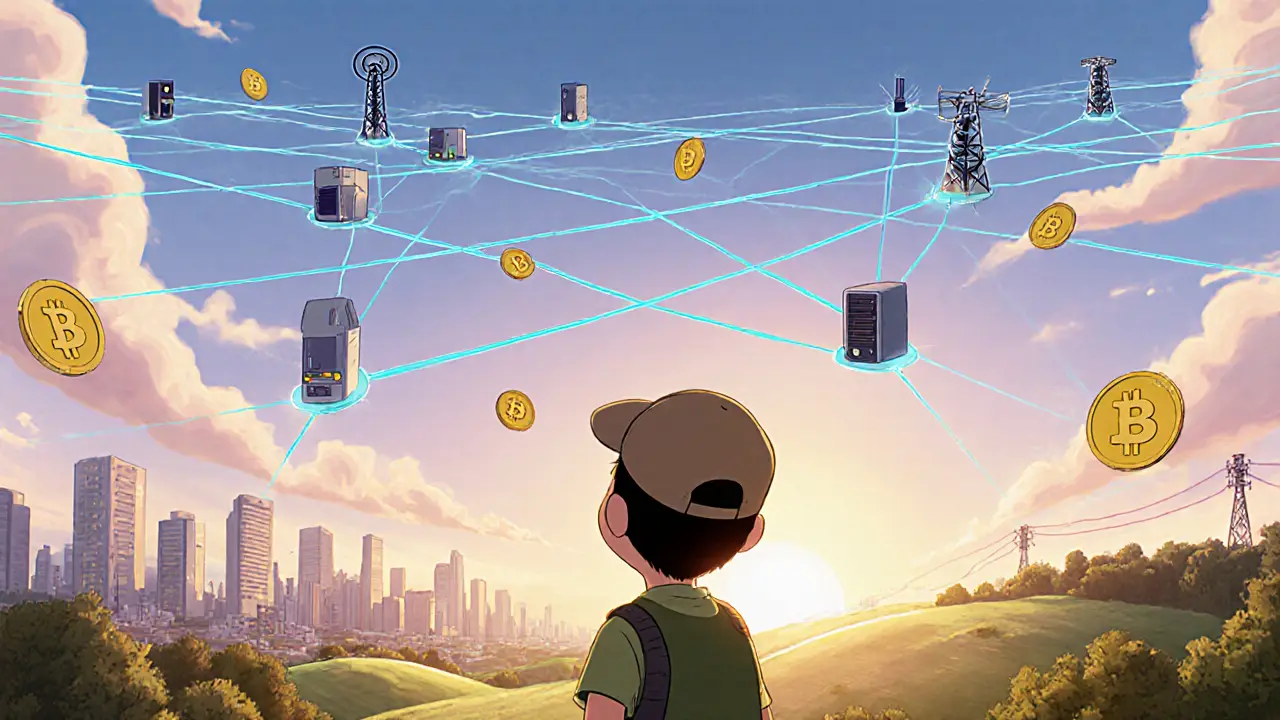Explore DePIN token economics, covering supply models, incentives, utility, market performance, risks, and a practical checklist for participants.
Decentralized Physical Infrastructure Network Explained
When exploring decentralized physical infrastructure network, a system that spreads computing, storage, and connectivity across countless independent nodes instead of a single data center. Also known as DPIN, it lets services run without a single controlling entity. The term decentralized physical infrastructure network has become a buzzword in crypto circles because it touches everything from edge‑computing to global payments.
Core Building Blocks That Make DPIN Work
At the heart of any DPIN lies a consensus algorithm, the rule set that lets dispersed nodes agree on the state of the ledger. Whether you’re looking at Practical Byzantine Fault Tolerance (PBFT), Proof‑of‑Work, or newer Proof‑of‑Stake variants, the algorithm determines how quickly transactions settle and how resistant the network is to attacks. A strong consensus layer also depends on digital signatures, cryptographic proofs that verify each transaction’s authenticity. Without reliable signatures, anyone could spoof data and undermine trust, paving the way for the double‑spending or 51% attacks we see discussed in many security‑focused articles.
Beyond the tech, DPINs create economic incentives through tokenomics, the design of token supply, distribution, and utility that fuels participation. Token models reward node operators for providing bandwidth, storage, or compute power, while also giving users access to services at lower fees than traditional centralized platforms. This financial layer ties directly into regulatory compliance, another pillar highlighted across our posts. Jurisdictions like the UAE offer tax‑free environments that attract DPIN projects, whereas countries such as Kuwait impose strict bans that shape how networks can operate globally.
Putting these pieces together, a DPIN encompasses distributed ledger technology, requires robust consensus mechanisms, and relies on secure digital signatures to maintain integrity. In turn, the regulatory landscape influences tokenomics, shaping who can join the network and under what conditions. This web of relationships is why understanding each component matters, whether you’re a developer building the next edge‑computing service or an investor assessing risk.
Our collection of articles dives deeper into each of these topics. You’ll find a practical guide on PBFT consensus, a breakdown of digital signature vulnerabilities, an overview of tokenomics for emerging projects, and real‑world case studies of how tax policy in the UAE or sanctions in North Korea affect network growth. By connecting the technical foundations with market realities, these posts give you a 360° view of what makes a decentralized physical infrastructure network tick.
Ready to see how these concepts play out across the crypto ecosystem? Below you’ll discover detailed analyses, step‑by‑step tutorials, and up‑to‑date research that puts the theory into practice. Whether you’re just curious about the buzz or you’re planning to launch your own node, the articles ahead will arm you with the knowledge you need to navigate this fast‑evolving space.





